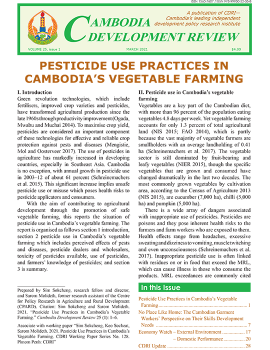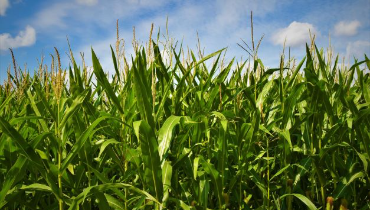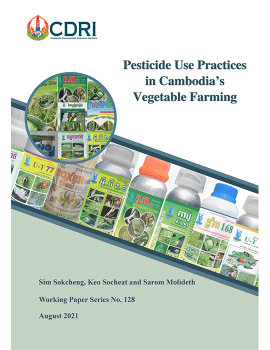On-farm Food Safety in Horticulture in Cambodia: The Case of Vegetable Farming

Despite being an agrarian economy, Cambodia imported vegetables approximately 70 percent of the total domestic consumption because the commercialized vegetable farming in Cambodia is inadequate, let alone the commercial investment in the export-based horticulture (USAID, 2015). Vegetable farming accounts for only around 2 percent of the temporary crop area in the country and the local supply of vegetables is so seasonal and limited that consumers turn to the products imported from Vietnam and Thailand to fill out the domestic supply shortfall. Hence, there is a great potential for Cambodia to become less reliant on the imports by expanding domestic supply of vegetables, which is expected to significantly improve rural farm incomes, food safety and nutrition.
The previous studies suggest that the
competitiveness of Cambodia’s vegetable subsector would be greatly enhanced if
Cambodia’s vegetable farmers become increasingly able to comply with the Good
Agricultural Practices (GAP) (USAID, 2015; Nuppun, 2015). For ASEAN
markets, this standard is a package of 84 farming practices, ranging from production,
harvest and post-harvest handling. It ensures the quality and safety of
agricultural produce, including vegetables. Given the current capacity of
Cambodian farmers, adopting all of the practices is really challenging. Thus,
the feasible strategy for our vegetable subsector is to focus on what we can or
could do better than either Vietnam or Thailand by augmenting the import
substitution potential. For instance, ensuring the safety of the local
vegetables along with sufficient supply can increase the domestic demand, which
now is significantly lower than the demand for the imported ones.
Due to the importance of improving on-farm food safety in vegetable production, conducting research studies about this area can be of significant policy input for the agricultural development in Cambodia. However, previous research studies on this subsector in Cambodia have not been very extensive. Most of the available studies for Cambodia have yet to specifically address the issues of on-farm food safety in vegetable subsector (e.g. Nuppun, 2015; USAID, 2015; CPS, 2016). Additionally, none of the previous studies has looked at this issue by comparing Cambodia’s situation to one of that of its neighbours (i.e. Vietnam or Thailand) – the main source of the vegetable supply in Cambodia. Thus, it is worth filling out this gap.
Project Objective
The good farming practices in the
vegetable production in this study is limited to the ones regarding pesticide
uses, which are the determining factors of on-farm food safety for the
vegetables. Aiming at contributing to the
advancement of strategies/ and policies concerning to horticulture (i.e.
vegetable), and on-farm food safety issues, this study will use empirical
evidence-based analysis to understand and document the current practices of
pesticide application in Cambodia’s vegetable production, and compare it with a
main vegetable supplier. More specifically, this study addresses three
important questions. First, it intends to document the extent to which vegetable
farming households in Cambodia comply with the good practices of pesticide
application. Second, this study will empirically examine whether or not
the on-farm food safety in Cambodia’s vegetable farming is better than that of
Vietnam – one of the main vegetable suppliers. Finally, it will identify the
key constraints to promoting on-farm food safety in Cambodia’s vegetable
subsector.
Project Members
Publications

Pesticide Use Practices in Cambodia’s Vegetable Farming
Other Projects

Cambodia Gender and Inclusive Development Analysis...
This study aims to fill this gap in research by conducting a Gender and Inclusive Development Analysis (GIDA) combining qualitative and quan...

Cambodia's Agri-Food Trade: Structure, Challenges,...
From the early 1990s, Cambodia’s agricultural food trade was seen as exports of raw materials and unprocessed primary commodities to neighbo...

Network for Agriculture and Rural Development Thin...
The Network of Agriculture and Rural Development Think-tanks (NARDT) project is designed to form a consortium with flexible cooperation mech...

Migration, Remittances and Child Schooling in Rura...
Growing rural-to-urban and international migration flows have sparked concerns about the investments in education of the children left beh...




